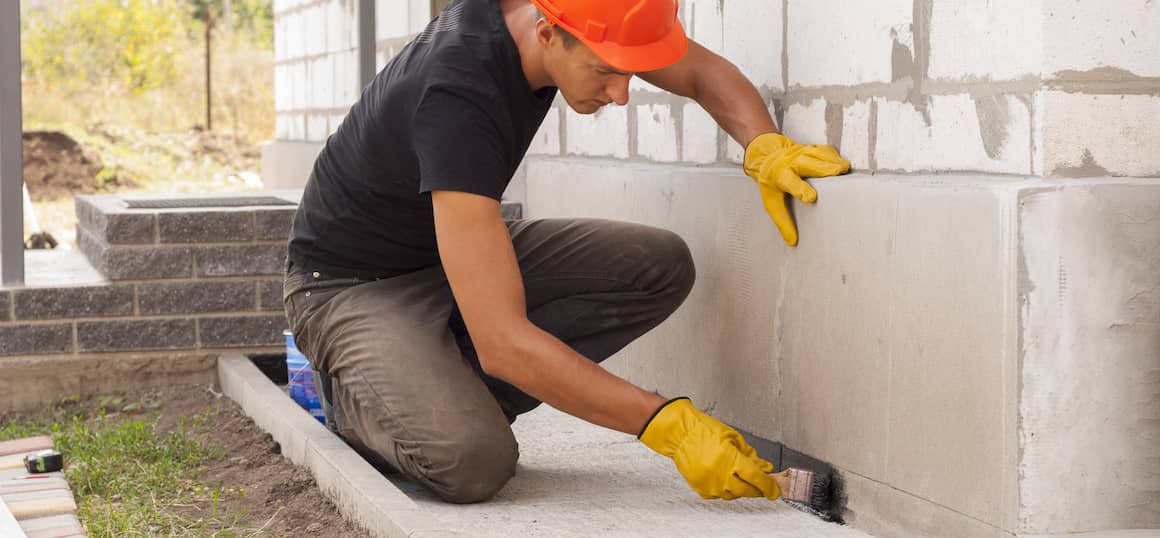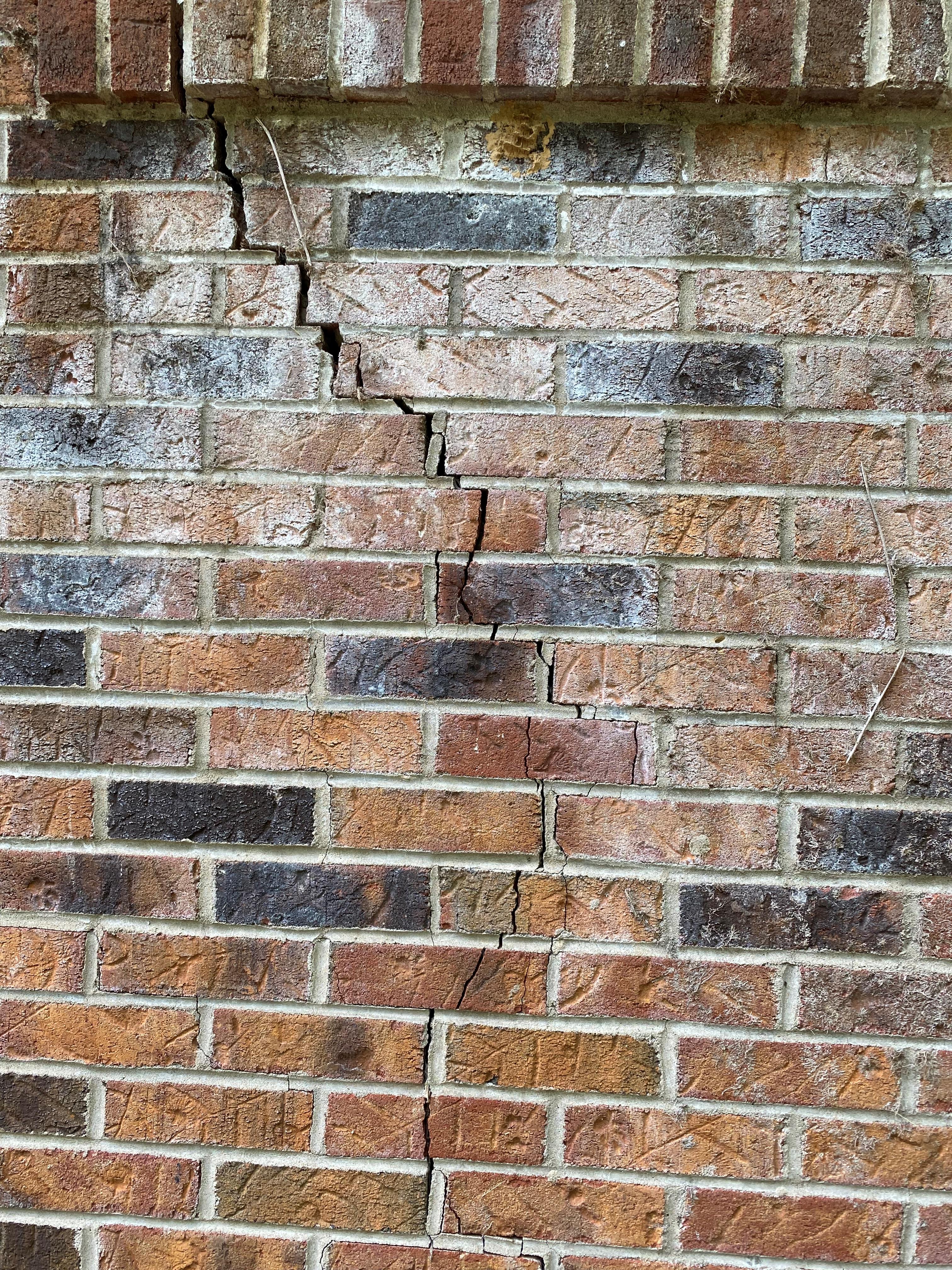To fix a sinking foundation, identify the underlying cause and then implement the appropriate repair technique. A sinking foundation can be a major concern for homeowners, as it can lead to structural problems and decrease the value of the property.
It is important to address this issue promptly to prevent further damage. There are several potential causes for a sinking foundation, including unstable soil, poor construction, or water damage. Once the cause has been determined, the appropriate repair technique can be implemented.
Common solutions include underpinning with piers or installing helical anchors to stabilize the foundation. Additionally, drainage issues should be addressed to prevent further water damage. Regular foundation inspections and maintenance can also help prevent future sinking issues.
Signs Of A Sinking Foundation
Is your foundation sinking? Look out for signs such as cracks in walls, uneven floors, and doors that stick. Don’t panic, there are solutions available to fix this issue, such as foundation underpinning or slabjacking. Get professional help to assess and address the problem before it worsens.
A sinking foundation can lead to serious structural issues in your home if left untreated. It’s important to keep an eye out for the signs and address them promptly to prevent further damage. Here are a few common signs of a sinking foundation:
Visible Cracks
One of the most obvious signs of a sinking foundation is the presence of visible cracks on the walls, floors, or ceilings of your home. These cracks may start small but can quickly widen and become more prominent over time. They can appear horizontally, vertically, or even in a stair-step pattern. If you notice any cracks in these areas, it’s essential to have a professional assess your foundation.
Uneven Floors
Another sign of a sinking foundation is uneven floors. You may notice that your floors aren’t level, causing objects to roll or slide in certain areas. This unevenness can be especially noticeable in older homes or in areas where the foundation has shifted significantly. Uneven floors can also lead to tripping hazards and should be addressed promptly to ensure the safety of your household.
Sticking Doors And Windows
If you’re having difficulty opening or closing your doors and windows, it could be a sign of a sinking foundation. As the foundation settles and shifts, it can cause the door frames and window frames to become misaligned. This misalignment can result in doors and windows sticking, jamming, or not closing properly. If you’re experiencing issues with your doors and windows, it’s crucial to have your foundation inspected to determine the cause and prevent further damage.
Ignoring the signs of a sinking foundation can lead to costly repairs down the line. By staying vigilant and addressing these issues promptly, you can protect your home’s structural integrity and maintain its value. If you notice any of these signs in your home, don’t hesitate to consult a professional who can help you fix your sinking foundation.

Credit: www.basementfix.com
Causes Of Sinking Foundation
A sinking foundation can be a major cause of concern for homeowners. Not only does it affect the structural integrity of the building, but it can also lead to various other problems such as cracked walls, uneven floors, and sticking doors. Understanding the causes of a sinking foundation is crucial in order to address the issue effectively. Here are three common factors that contribute to a sinking foundation:
Poor Soil Compaction
One of the primary reasons for a sinking foundation is poor soil compaction. When a building is constructed, the soil beneath it needs to be properly compacted to provide stable support. However, if the soil is not compacted adequately, it can settle over time and lead to foundation settlement. Factors such as loose soil, organic material, and improper soil preparation can contribute to poor soil compaction. This can cause the foundation to sink unevenly, resulting in structural damage.
Moisture Imbalance
Another factor that can cause a sinking foundation is moisture imbalance in the soil. Excessive moisture or lack of proper drainage can create significant issues for the foundation. When the soil around the foundation becomes overly saturated with water, it can lead to soil erosion, shrinking, or swelling. This can destabilize the foundation and ultimately cause it to sink. On the other hand, in areas with insufficient moisture, the soil can shrink and create voids beneath the foundation, leading to settlement and sinking.
Plumbing Leaks
Plumbing leaks can also contribute to a sinking foundation. If there are water leaks in the plumbing system located beneath or near the foundation, it can result in a constant flow of water into the soil. Over time, this can cause significant erosion and weakening of the soil supporting the foundation. Without proper support, the foundation can sink and cause structural problems. It is crucial to regularly inspect and address any plumbing leaks to prevent foundation damage.
Understanding the causes of a sinking foundation is the first step towards finding a solution. It is important to address these issues promptly to prevent further damage and ensure the stability of your home. Now that we have explored the common causes, let’s dive into the possible solutions to fix a sinking foundation in the next section.
Professional Assessments
When it comes to addressing a sinking foundation, professional assessments play a crucial role in determining the underlying issues and providing the right solutions. These assessments involve a thorough examination of the foundation and the surrounding soil. By conducting a foundation inspection and soil testing, experts can accurately identify the cause of the problem and recommend appropriate measures to fix it.
Foundation Inspection
Foundation inspections are essential to assess the state of the foundation and identify any structural concerns. During this assessment, a trained professional visually inspects the foundation for cracks, bulges, or other signs of damage. They also examine the surrounding areas such as walls, windows, and doors to determine if any shifting or misalignment has occurred. Additionally, a foundation inspection may involve measuring the levelness of the floors and checking for moisture issues.
Through a comprehensive foundation inspection, experts can gather vital information about the condition of the foundation and identify the best course of action to fix it. Whether it requires minor repairs or substantial underpinning, a proper assessment ensures the appropriate measures are taken.
Soil Testing
Soil testing is an essential part of the assessment process as it helps shed light on the soil’s properties and its contribution to the foundation problems. Experts collect soil samples from different depths around the foundation, analyzing its composition, density, and moisture content.
This data allows them to determine if the soil is expanding and contracting excessively or if it lacks proper load-bearing capacity. By understanding the soil conditions, professionals can determine if there are issues like expansive clays, poor compaction, or inadequate drainage. This knowledge is crucial in developing effective solutions that address the root cause of the sinking foundation.
Soil testing provides valuable insights, enabling professionals to recommend suitable foundation repairs or reinforcements. Depending on the findings, solutions may include methods like installing helical piers, adding additional support beams, or implementing proper drainage systems to stabilize the foundation.

Credit: www.rocketmortgage.com
Repairing A Sinking Foundation
Learn how to fix a sinking foundation with these expert tips and strategies. From identifying the underlying causes to implementing proper repairs, our guide will help you restore stability to your home’s foundation.
Repairing a Sinking Foundation If you’ve noticed signs of a sinking foundation, such as cracks in your walls or uneven doors and windows, it’s essential to take action quickly. Ignoring foundation issues can lead to significant structural damage and costly repairs down the line. In this section, we will discuss the different methods for repairing a sinking foundation, including slabjacking and pier and beam repair.Underpinning Methods
Underpinning is a common method used to stabilize and repair a sinking foundation. Underpinning involves strengthening the foundation by increasing its depth and support. There are several underpinning methods available, including: 1. Slabjacking 2. Pier and Beam RepairSlabjacking
One popular underpinning method is slabjacking. Slabjacking is an effective technique used to raise and level a sinking concrete slab foundation. This process involves injecting a specialized grout mixture underneath the sunken slab, which then lifts it back to its original level. Slabjacking offers numerous benefits for repairing a sinking foundation. Firstly, it is a cost-effective solution compared to other repair methods. Additionally, slabjacking is a non-intrusive process that requires minimal disruption to your property. With slabjacking, you can effectively and efficiently restore the stability of your foundation.Pier And Beam Repair
Another underpinning method commonly used for sinking foundation repair is pier and beam repair. This method involves installing additional support beams or piers to reinforce the foundation. These beams or piers bear the weight of the structure and provide added stability. Pier and beam repair is often recommended for older homes with foundation issues. This method allows for the adjustment and leveling of the foundation, correcting any sinking or settling that may have occurred over time. By implementing pier and beam repair, you can ensure the long-term stability and durability of your foundation. In conclusion, repairing a sinking foundation is crucial to maintain the structural integrity of your property. Underpinning methods such as slabjacking and pier and beam repair offer effective solutions to address foundation issues. Whether you choose slabjacking or pier and beam repair, consulting with a professional foundation repair contractor is essential to determine the most suitable method for your specific foundation problems. Don’t wait until it’s too late; take action now to prevent further damage and protect your investment.Preventing Future Foundation Issues
A sinking foundation can be a stressful and costly problem to deal with. However, taking proactive steps to prevent future foundation issues can save you from such headaches. By implementing the following measures, you can ensure the long-term stability and durability of your foundation.
Proper Drainage System
A well-designed and properly functioning drainage system is crucial to prevent water from accumulating around your foundation. Excessive moisture can cause the soil to expand and contract, leading to foundation settlement and sinking.
Here are a few key elements to consider when it comes to your drainage system:
- Redirect downspouts away from the foundation: Ensure that downspouts are extended at least 5 to 10 feet away from the foundation to direct water away and prevent it from pooling near the base of your home.
- Gutters and troughs: Keep your gutters clean and free from debris to allow water to flow smoothly. Consider installing troughs or splash blocks to further direct water away from the foundation.
- French drains: If you have areas of your property with poor drainage, installing a French drain system can help redirect water away from your foundation.
Maintaining Consistent Moisture Levels
Ensuring consistent moisture levels around your foundation is another key factor in preventing future issues. Extreme fluctuations in soil moisture can cause it to shrink or expand, leading to foundation movement and instability.
Here are some tips to help you maintain consistent moisture levels:
- Proper landscaping: Avoid planting large trees or shrubs too close to your foundation, as their roots can absorb excessive moisture from the soil and cause it to shrink.
- Use soaker hoses: In dry periods, use soaker hoses to provide a consistent and controlled water supply to the soil surrounding your foundation. This helps prevent soil shrinkage.
- Monitor and control irrigation: Ensure that your sprinkler system is not overwatering or causing pooling near the foundation. Adjust the frequency and duration of watering based on weather conditions.
By implementing these preventative measures, you can significantly reduce the risk of future foundation issues. Remember, regular maintenance and keeping an eye out for any signs of trouble are essential to catch potential problems early on.

Credit: www.usstn.com
Frequently Asked Questions Of How To Fix Sinking Foundation
How Do I Know If My Foundation Is Sinking?
If you notice cracks in your walls, sloping floors, or doors that won’t close properly, these are signs that your foundation may be sinking. It’s important to have a professional inspection to determine the extent of the issue and the best course of action.
Can A Sinking Foundation Be Fixed?
Yes, a sinking foundation can be fixed. There are several methods that can be used, such as slabjacking, helical piers, or underpinning. The best solution will depend on the specific circumstances of your foundation. It’s important to consult with a professional to determine the most effective and appropriate fix.
How Much Does It Cost To Fix A Sinking Foundation?
The cost of fixing a sinking foundation can vary depending on the severity of the issue and the chosen repair method. On average, homeowners can expect to pay between $5,000 and $10,000 for foundation repairs. However, it’s important to get a professional assessment and estimate for an accurate cost based on your specific situation.
How Long Does It Take To Fix A Sinking Foundation?
The time it takes to fix a sinking foundation can vary depending on the extent of the damage and the chosen repair method. Minor repairs may take a few days, while more extensive repairs could take several weeks. It’s best to consult with a professional to get a more accurate timeline based on your specific situation.
Conclusion
Fixing a sinking foundation is a complex task that requires professional expertise. By identifying the underlying causes and implementing appropriate solutions, such as foundation underpinning or drainage improvements, homeowners can ensure the stability and longevity of their homes. Regular inspections and maintenance play a crucial role in preventing future foundation issues.
Trusting experienced contractors and taking timely action can save homeowners from costly repairs down the line.
- The Power of Mobile Accessibility And Real-Time Tracking for Trucking Operations - November 6, 2024
- Why Ease of Use is Crucial in Trucking Dispatch Software - September 22, 2024
- Better Communication With Dispatchers: How Trucking Dispatch Software Can Optimize Operations - September 7, 2024



